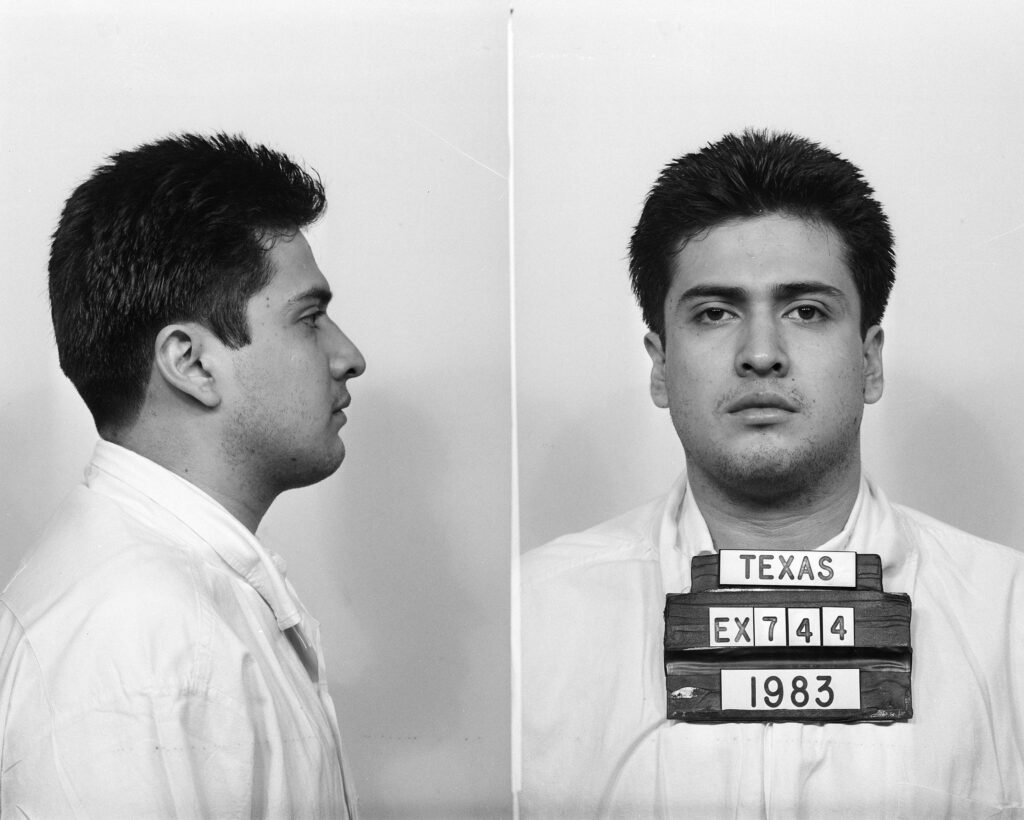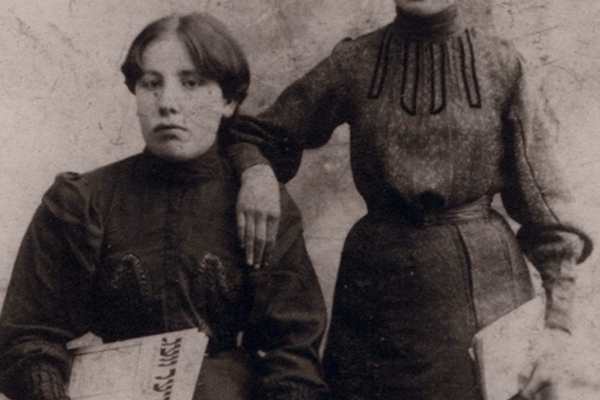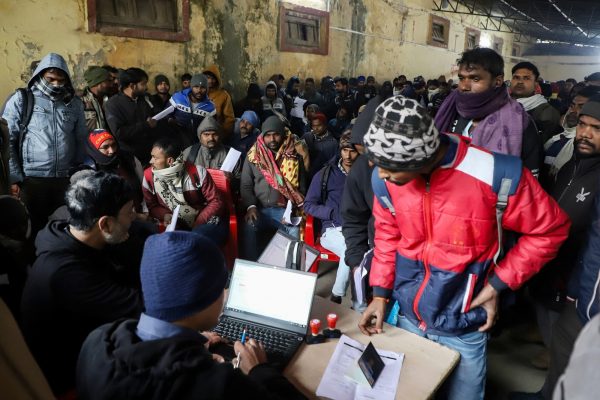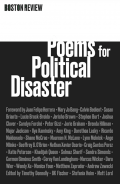Los Tocayos Carlos: An Anatomy of a Wrongful Execution
by James S. Liebman, Shawn Crowley, Andrew Markquart, Lauren Rosenberg, Lauren Gallo White, and Daniel Zharkovsky
Columbia Human Rights Law Review, Issue 3, Volume 43.
Prosecution Complex: America’s Race To Convict and Its Impact on the Innocent
by Daniel S. Medwed
New York University Press, $39.00 (cloth)
Last September, during a Republican presidential primary debate in Simi Valley, California, moderator Brian Williams pressed Texas Governor Rick Perry on his unequivocal support for the death penalty. Perry had presided over 234 executions—more than any governor in modern times—Williams noted. The crowd burst into applause. When the noise died down, Williams continued, “Have you struggled to sleep at night with the idea that any one of those might have been innocent?”
“I’ve never struggled with that at all,” Perry responded. “The state of Texas has a very thoughtful, a very clear process in place. When someone commits the most heinous of crimes against our citizens, they get a fair hearing, they go through an appellate process, they go up to the Supreme Court of the United States if that’s required.”
The exchange went viral the next day. Liberals raged against what they perceived to be Perry’s and the crowd’s insensitivity to human life. Conservatives rallied behind Perry’s conviction that the capital punishment is a just response to a heinous crime. A month after the debate, polling by Gallup found that 61 percent of Americans approved of using the death penalty for murderers.
That’s a substantial majority, but the figure used to be much higher. In 1994, 80 percent of the country supported the death penalty for a convicted murderer. By the turn of the century, that number had fallen to the mid-sixties. Last year’s result represented the lowest level of support since 1972, when the Supreme Court ruled that state death penalty statutes, as they were being applied, violated the Eighth Amendment’s ban on cruel and unusual punishment.
Advances in forensic science and recent exonerations of convicts have contributed to a political push to abolish the death penalty. Since 1989, when DNA evidence was first used to exonerate a prisoner, 299 others in 35 states and the District of Columbia have relied on DNA evidence to prove their innocence, in some cases while sitting on death row. The vast majority of these exonerations have occurred within the past decade. Recent years have also witnessed a number of high profile death penalty cases where substantial doubt exists about the guilt of the executed. In 2009, for example, The New Yorker chronicled the case of Cameron Todd Willingham, a Texas man who was convicted of murdering his children by setting their home on fire, and revealed that the arson expert who testified against Willingham based his opinion, which was central to the conviction, on what is now widely considered to be junk science. More recently, supporters of Troy Davis, a Georgia man executed for the murder of a police officer, argued his innocence publicly and vociferously after seven of the nine non-police witnesses who testified against him recanted.
A number of politicians have been moved to action by similar stories and the concerns they raise about the effectiveness of their state’s justice system. In April, Connecticut became the seventeenth state, and the fifth in the last five years, to repeal its death penalty statute.
Despite this trend, one rhetorical point has persisted for death penalty advocates: if the judicial system were so bad, and innocents were being killed, we surely would have heard about it by now. “We would not have to hunt for it,” Justice Antonin Scalia said recently, “the innocent’s name would be shouted from the rooftops.” We have heard of innocents being released, the argument goes, but it has never been clear that the state has executed an individual for a crime he or she did not commit.
That is, until now.
In May, the Columbia Human Rights Law Review dedicated an entire issue to the story of Carlos DeLuna, who was executed by the state of Texas in 1989. The article, “Los Tocayos Carlos: An Anatomy of a Wrongful Execution,” forthcoming as a book, runs 434 pages long, reads like Truman Capote’s In Cold Blood, and is groundbreaking in its detail and scope. Its conclusion: Texas murdered an innocent man.
• • •
On the evening of February 4, 1983, a man walked into the Sigmor Shamrock gas station in Corpus Christi, Texas and stabbed the attendant, 24-year-old Wanda Lopez, to death. Just prior to the attack, Lopez called 9-1-1, and the dispatcher heard her last words: “You want it? I’ll give it to you. I’m not gonna do nothing to you. Please!!!!”—and then a scream. A lone witness, who happened to be filling his tank at the time of the crime, looked the assailant in the eye as he fled. The police reached the scene in less than three minutes, and a manhunt ensued. Thirty-seven minutes later, two policemen found DeLuna, who had recently been released from prison after serving two and a half years of a three-year sentence for attempted rape, cowering under a truck near the gas station and smelling of beer. DeLuna’s first words upon being found would be his refrain until the day he died: “I didn’t do it, but I know who did.” The police handcuffed DeLuna, placed him in their cruiser, and brought him to the scene of the crime. There, they flashed a light on him as he sat shackled in the backseat and showed him to the witness, who confirmed the officers’ suspicion: DeLuna was their guy. The case seemed clear cut. The police turned the matter over to the prosecutor’s office, which sought the death penalty.
DeLuna’s prosecutor checked out all of the evidence used at trial. It has been missing ever since.
As the authors of “Los Tocayos Carlos” document, the case for DeLuna’s guilt disintegrates even upon minimal review. At every turn, all of the essential players in the criminal justice system—police, prosecutors, defense counsel, and judges—failed completely, preventing DeLuna from receiving a trial that was, in any sense, fair and just. The missteps were too numerous to catalog here, but a few stand out:
- During the manhunt, a police dispatcher provided contradictory information about the assailant’s appearance, clothing, and the direction he was seen running. The dispatcher’s information was based, in part, on statements made by three additional witnesses: one was on site shortly before the murder and reported seeing a man with a knife outside the gas station; two others reported seeing a man running in the street shortly thereafter. Their descriptions conflicted dramatically, suggesting that they had seen different people. The dispatcher cobbled together a composite sketch that bore little resemblance to any of the witnesses’ identifications. The police accidentally erased the tape of the dispatcher’s commentary and never disclosed its existence to defense counsel. More than twenty years later, the Columbia team’s investigator contacted the dispatcher and learned that he had made a copy of the tape for himself and still had it in his possession.
- The police took pictures of the bloody crime scene but failed to disclose many of them to defense counsel. A picture of a bloody footprint remained under wraps and the footprint was never compared to DeLuna’s.
- The police botched the process for gathering finger prints, rendering their results unusable, and failed to recover from the crime scene items, such as a burned cigarette and a wad of chewed gum, that may have yielded forensic evidence. They did not take any blood samples from the scene and did not scrape the victim’s fingernails for traces of the perpetrator’s skin or blood.
- The police concluded their on-site investigation within two hours of the crime and then turned the store over to its owner, who washed it down, destroying all remaining evidence of the crime, so he could reopen in the morning.
- Months before trial, a police detective began hearing rumors from sources on the street that a man named Carlos Hernandez had actually killed Lopez. This was never disclosed to defense counsel.
- When, before trial, DeLuna overcame his fear of reprisal and named Carlos Hernandez as the killer, prosecutors claimed they had never heard of him and later reported to the court that, after an investigation, they could not locate anyone by that name. In fact, the police had brought Hernandez, who closely resembled DeLuna, in on an outstanding traffic warrant three months prior to trial, after finding him standing behind a 7-Eleven with a knife in his pocket. This was never disclosed to defense counsel.
- Three years earlier, in 1980, one of DeLuna’s prosecutors had tried a man charged with stabbing a young woman to death with a buck knife and then carving the letter “X” into her back. During that trial, which resulted in an acquittal, defense counsel argued that Carlos Hernandez was the real killer, and presented evidence that Hernandez owned a buck knife, talked about and displayed the knife frequently, had a history of violence against women, and wanted payback against the victim for having slept with his sister’s husband. This was never disclosed to defense counsel. (In 1986, the police arrested Hernandez for the murder after learning that he had admitted his guilt to a girlfriend. The charges were ultimately dismissed when the same prosecutor who led the trial against DeLuna failed to produce court-ordered discovery to defense counsel.)
- The day after DeLuna was convicted, this same prosecutor checked out all of the evidence used at trial. It has been missing ever since.
These and others failures were so important because the prosecution’s case had serious problems to begin with. DeLuna had no blood on him when found by police, even though copious amounts were left at the crime scene. No other forensic evidence linked him to the crime. He did not have a weapon. He had no motive. He had no need for money, since he had just been paid by his employer that day. He did not have a relationship with the victim. The prosecution relied merely on DeLuna’s proximity to the crime, the fact that he was found hiding under a truck and smelling of beer, his criminal history, a cross-racial identification by a lone eyewitness who saw the assailant for a few seconds at night outside of a gas station, and, finally, Lopez’s dramatic last utterances, which the prosecution played repeatedly. Apart from DeLuna’s own testimony, the jury never heard a word about Hernandez, whom prosecutors dismissed as a “phantom.”
Hernandez admitted to family and friends that he was the real killer.
After his conviction, DeLuna continued to proclaim his innocence. DeLuna had known Hernandez, but not well. At trial, DeLuna testified that, just before the murder, he and Hernandez walked to a bar across the street from the gas station to look for someone. When they got there, DeLuna went inside, bought a beer, and waited for Hernandez, who said he was going across the street to the gas station to buy cigarettes. When Hernandez did not return, DeLuna went to look for him and saw Hernandez struggling with a woman inside the gas station. He then heard police sirens. Fearing that his parole status might somehow implicate him, DeLuna fled and attempted to hide from the police.
At the same time, Hernandez admitted to family and friends in the days after the murder that he was the real killer. He continued to profess his guilt until he died in 1999 of cirrhosis of the liver while serving time for violating parole—he had threatened one of his neighbors with a knife. The offense for which he had received a ten-year sentence was eerily familiar: in 1989, the year DeLuna was executed, Hernandez pled no contest to a charge of aggravated assault after he stabbed his then-girlfriend with a knife and threatened to carve the letter “X” into her.
Of the few broad conclusions the authors of “Los Tocayos Carlos” draw, one is particularly sobering, given that so much violent crime occurs between people from the same social stratum: contrary to the conventional wisdom that “the worst injustices occur in cases involving the worst imbalance of status and power . . . it is the case of the obscure accused of murdering the obscure . . . that is the most ripe for miscarriage of justice, particularly when it becomes embroiled in the cauldron of state killing.”
The painstakingly crafted report engenders shock, not just at the horror of a past wrong, but at the possibility that someone besides DeLuna has also been wrongly executed, or will be in the future. When the shock wears off, a question remains: What is to be done?
• • •
In his new book, Prosecution Complex: America’s Race to Convict and Its Impact on the Innocent, legal scholar Daniel Medwed seeks to answer this question as it pertains to prosecutors. Formerly the Assistant Director of the Second Look Program at Brooklyn Law School, Medwed spent more than 10 years reviewing petitions of innocence and litigating for the release of those he believed were wrongly convicted. In Prosecution Complex, he draws on this experience to explore how prosecutorial behavior has contributed to wrongful convictions.
In contrast to the rich narrative of “Los Tocayos Carlos,” Prosecution Complex is more a policy guide for insiders. Medwed, a self-professed “gradualist,” who “prefer[s] renovation to demolition,” does not attempt to shout from the rooftops. Instead, he engages in a scholarly conversation with those who, like him, work or have worked in the criminal justice system and understand how seemingly small legal changes can seriously affect how cases are tried, won, and lost.
Broadly speaking, reforms to the justice system can come from the top, through legislatures and courts, or the bottom, through local prosecutors’ offices. Medwed recommends a number of both types of reforms in the pre-trial and trial phases, which he contends will make the conviction of innocent defendants less likely. Medwed’s top-down reforms include imposing broader discovery obligations on prosecutors, limiting the types of pleas courts can accept, and creating new boundaries for proper closing arguments.
Converting calls for top-down change into actual top-down change can be a slow, difficult, and exceedingly politicized process, even where the proposed change is well-founded. Medwed’s bottom-up proposals are more likely to result in near-term reform.
One practice that Medwed focuses on is the use of jailhouse informants. Testimony by witnesses who benefit from cooperating with prosecutors has been identified as one of the leading causes of wrongful convictions. Medwed cites Los Angeles County as both a prime example of the perils of informant testimony and the model of how to reform the practice. In 1989, an investigation revealed that dozens of informants housed at the L.A. County Jail had perjured themselves in trials that led to felony convictions. The inmate who blew the whistle on the perjury acknowledged that, during one 36-day period, he gave false testimony about three murders and a burglary, claiming in each instance that he had learned his information from the defendants themselves through jailhouse conversations. In response to this revelation, the L.A. District Attorney’s Office changed its informant policy. Now, an in-house committee must review and approve an informant’s appearance at trial. Medwed notes that, in 2007, the California Commission on Fair Administration of Justice reported that the committee had only approved the use of “twelve in-custody informants in the previous four years.” Each use of an informant must be catalogued in a database and any interview the informant gives must be recorded. These protocols, Medwed argues, represent an important step toward protecting innocent defendants from false testimony.
Medwed’s best reforms concern the post-trial phase: he identifies several factors that make prosecutors reluctant to embrace post-trial pleas of innocence such as those DeLuna made repeatedly between 1983 and 1989. First, he argues, prosecutors are burdened by cognitive biases. Every defendant, it seems, cries innocent, even after trial. It is hard, amidst this cacophony, to take any one claim seriously. Further, a “confirmation bias” sets in after a jury convicts a defendant and prosecutors tend “to seek out and value information that confirms, rather than rejects, their initial hypothesis.” With a jury, and, sometimes, an appellate court confirming the prosecutor’s belief in an individual’s guilt, Medwed states that a “status quo bias” takes hold, and the presumption of guilt becomes even “stickier.” This is as it should be if we take our criminal justice system seriously, but, given the system’s faults, Medwed is rightly concerned about how to cut through the stickiness to discover those who have been wrongly convicted. These biases are a particularly high hurdle for claims of innocence in many jurisdictions, since smaller offices often assign innocence review to the prosecutor who handled the trial.
Though innocence task forces cost money, they help avoid the awful expense of wrongful conviction.
Medwed also identifies resource constraints, political considerations, and the quest for finality as barriers to post-trial innocence review. DA offices are often understaffed, underfunded, and over worked. Much of their time and many of their resources are dedicated to pre-trial and trial work. Politics may affect prosecutors’ interests in uncovering wrongful convictions, too. As Medwed notes, elected district attorneys often only cooperate with defense counsel on post-trial claims of innocence under unique circumstances, such as when DNA specifically implicates another culprit, the conviction occurred under a previous DA’s administration, or the wrongfully convicted inmate is serving a sentence for an unrelated crime that will not be affected if the inmate is exonerated. Victims and the public at large benefit emotionally from closure, too, making it difficult for those invested in a prosecution to re-review a case.
So, what can be done by prosecutors to ensure that the wrongfully convicted do not remain in prison or face execution? Ironically, Texas, which executes more inmates than any other state, provides a template. In 2007, newly elected Dallas County District Attorney Craig Watkins, whose great-grandfather was executed by the state of Texas, convinced the legislature to fund what is known as the Conviction Integrity Unit. The Unit is staffed by two assistant district attorneys, one investigator, and one legal assistant. Together, they review and re-investigate post-conviction claims of innocence. Medwed describes their process well:
If a claim meets a certain baseline of eligibility, the unit tries to determine the guilt or innocence without deference to the jury decision or considerations of finality. Roughly 25 percent of the requests to the unit have nothing to do with factual innocence and can be quickly dismissed. Many others go by the wayside after a cursory phone call or follow-up interview. If the remaining inquiries point to potential innocence, the unit investigates further. When additional investigation signals a reasonable possibility of innocence, the unit fully reviews the case. If the fruits of that review still indicate a reasonable possibility of innocence, the unit supports setting the conviction aside. On those occasions where the investigation does not produce such evidence, the unit leaves it to the defense to seek post-conviction relief and prove that the new evidence points “unquestionably” to innocence, as required by Texas law.
The Unit started by reviewing more than 400 DNA cases where evidence identified different or additional perpetrators. In recent years, it has broadened its review to non-DNA cases. As of May, it had helped exonerate 25 inmates. A few other district attorneys have followed Watkins’ lead. In 2009, Houston’s chief prosecutor established a similar unit and staffed it with two assistant prosecutors. They have helped exonerate three inmates. More recently, Manhattan District Attorney Cyrus Vance created his own unit and staffed it with ten prosecutors. Had such a unit existed in Corpus Christi in the 1980s, DeLuna might still be alive today.
Though innocence units cost money, they help avoid the awful expense of wrongful conviction to the wrongly incarcerated or executed; to the family of the victim, who lack closure; to subsequent victims who are threatened, hurt, or killed by the real perpetrator; and to the public, whose faith in the justice system is compromised and who must bear the cost of appellate litigation. In California, for example, the post-conviction cost of the death penalty has exceeded $2 billion since 1978, according to a recent study by a federal appeals court judge and a law professor. If the sentences of those remaining on death row were commuted to life without parole, California would realize savings of $5 billion over the next 20 years.
Paradoxically, such units may benefit district attorneys politically, too. Since establishing his Conviction Integrity Unit, Watkins has received positive press and is widely perceived as genuinely interested in achieving justice rather than winning as many convictions as possible. As Medwed writes in his introduction, “Unlike defense attorneys, whose sole task is to champion their clients’ interests, prosecutors are quasi-judicial officers equipped with a dual obligation. They must serve as zealous government advocates and neutral ‘ministers of justice.’” In an ideal world, prosecutors would be able to balance these duties. The reality, however, is that, in the heat of battle, it is easy to lose oneself in the role of zealous advocate.
It is for this reason, Medwed argues, that innocence units and other institutional changes, such as the decision by the Santa Clara County, California district attorney to reward prosecutors for uncovering innocent defendants, are so important. With incentives and institutional support, prosecutors are more likely to balance their dual roles. This, in turn, will decrease the possibility that innocent people are convicted and increase the likelihood that they will be released if they have been wrongly convicted.
Medwed also contends that reforms to DNA testing will increase the likelihood that wrongful convictions are discovered in the post-trial phase. With the exception of Oklahoma, every state allows defendants to seek post-conviction DNA testing, but, as Medwed notes, these statutory rights are subject to soft and hard limitations. As with every motion brought by a defendant, a motion for DNA testing is far more likely to be granted when a prosecutor assents to it. Medwed recognizes that “nearly 60 percent of the first 200 DNA exonerations eventually involved consent from law enforcement or prosecutors,” and acknowledges that prosecutorial resistance to DNA testing has “eased over time,” but he is nevertheless rightly concerned that prosecutors’ reluctance to support DNA review has “kept an indeterminable number of innocent prisoners behind bars.”
Many states place statutory limits on the scope of permissible DNA testing. For example, some states require a defendant to show, prior to testing, that a fundamental doubt will exist about the verdict should the DNA rule out the defendant as the source of evidence. Utah, where Medwed taught law school until recently, requires the defendant to pay for any test that ends up corroborating his or her guilt. Generally, Medwed is supportive of such limiting provisions in DNA testing laws, since they “walk a fine line between enabling defendants to pursue testing in legitimate cases and discouraging frivolous submissions.” There are, however, a number of limitations that Medwed argues “tip against innocent prisoners.” For example, some states will not test DNA if the defendant pled guilty. Medwed acknowledges that, in the interest of finality, a guilty plea might seem like a logical reason to preclude testing, but argues against the limitation on the ground that defendants often face pressure to plea to avoid a potentially lengthier sentence after trial. Medwed’s concern about false pleas is well founded: one quarter of the exonerations that have resulted from DNA testing involved a false confession, admission, or plea. Medwed also argues against laws that limit DNA testing to cases involving a serious felony. Here, again, Medwed’s concern is legitimate. While discovering innocent prisoners who are on death row or serving long sentences should be a greater priority, the broader goal of freeing everyone who has been wrongly convicted should be advanced through DNA testing, too, so long as statutory limitations exist to deter those who are guilty from burdening courts with meritless petitions.
Even when a prosecutor assents to testing, and the court allows it, testing cannot occur unless biological evidence exists. One reason that Watkins’ Conviction Integrity Unit has been able to help so many inmates gain freedom is that, unlike many other jurisdictions, his county saves biological evidence indefinitely. Medwed argues that this kind of strong retention policy “promote[s] the ends of justice without breaking the bank.” He notes that biological evidence is rare in criminal cases (it is primarily recovered in rape and sexual assault cases, which account for fewer than 1 percent of crimes), and relatively easy to store. Because labs can perform tests on tiny samples, they do not need to maintain all of the biological evidence recovered from a crime scene. Samples do not require expensive refrigeration, either. As long as biological evidence is stored in a dry, dark, air-conditioned area, in can be tested accurately.
Despite the recent decline in support for capital punishment, it remains the law of the land in nearly two thirds of the country. More than 3,000 inmates are currently on death row. Thirteen are scheduled to be executed before the end of this year. Over a million and a half others have been convicted and are incarcerated. With so much at stake, Medwed is right to highlight the role that prosecutors play in the system. The question is whether district attorneys and other law enforcement officials will heed his advice. Where innocence units are formed and DNA is preserved and tested, we may avoid another case like DeLuna’s.
Note: This article represents Gabriel O’Malley’s opinions and legal conclusions and not necessarily those of his current employer, the Office of the Attorney General of Massachusetts. The author can be reached at: gabriel [dot] omalley [at] gmail [dot] com.








